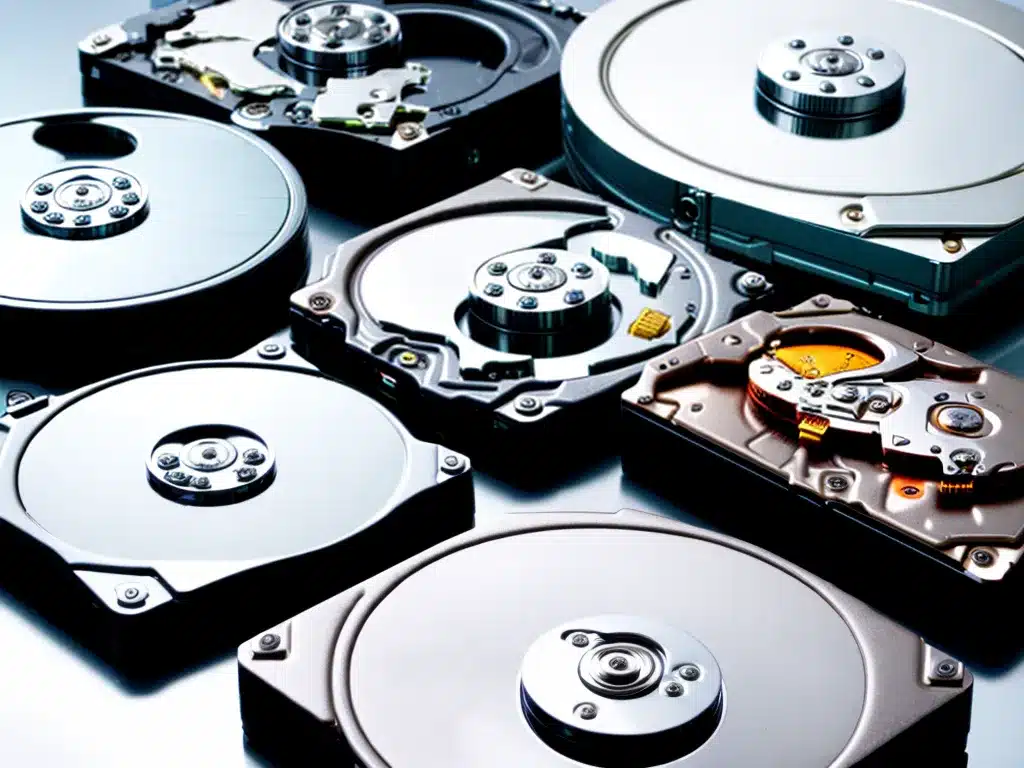
Introduction
External hard drives provide a convenient way to store and backup large amounts of data. However, just like any storage device, they can fail or become corrupted, resulting in data loss. As someone who relies on external hard drives for important files, data recovery is a crucial skill I need to have.
In this article, I will share everything I have learned about recovering data from external hard drives. I will cover the common causes of data loss, the different data recovery options available, and tips to avoid data loss in the first place. My goal is to provide readers with the knowledge needed to successfully recover data from an external hard drive.
Common Causes of Data Loss on External Hard Drives
Before looking at recovery methods, it’s important to understand what causes data loss in the first place. Knowing what can go wrong allows me to take steps to prevent these issues. Here are the most common reasons I may need to recover data from an external hard drive:
Logical Failures
These types of failures occur when the file system or operating system encounters errors that prevent access to data. Examples include:
- Accidental deletion – Files are mistakenly deleted or formatted.
- Corruption – Important system files become corrupted.
- Viruses – Malware and viruses damage files.
- Improper ejection – Unplugging the external drive without properly ejecting it first.
Physical Failures
These happen when there are actual physical defects or damage to the hard drive components. Common physical failures include:
- Hard drive crash – Mechanical or electrical failure makes the drive inaccessible.
- Degraded sectors – Parts of the platters become damaged and unusable.
- Bad sectors – Permanent damage to parts of the disk surface.
- Head crash – The read/write heads physically damage the platters.
Other Failures
Some other common reasons for data loss on external drives:
- Water damage – Liquids get into the enclosure and corrode the electronics.
- Fire or excessive heat – External drives can be damaged by high temperatures.
- Dropped drive – Physical shock from dropping or bumping can break components.
- Power surge – Electrical spikes fry the circuits and chips inside the enclosure.
Being aware of these potential issues allows me to be careful with my external drives and hopefully avoid data loss in the first place. But when data loss does occur, the next step is trying to recover the data.
Data Recovery Options for External Hard Drives
When data loss happens, there are several options I can pursue to try to get the data back. Each option has its pros and cons.
Use Drive Manufacturer Tools
If the drive is still somewhat accessible, the manufacturer may offer data recovery tools. For example, Western Digital has Data Lifeguard Diagnostics to test and repair drives. These tools can fix logical failures and recover deleted files. However, they may not be effective for physical damage.
Send to Data Recovery Service
For difficult cases like physical damage, a dedicated data recovery service may be able to repair the drive and extract data using specialized tools and clean rooms. The downside is it is expensive, costing hundreds to thousands of dollars, and not guaranteed.
DIY Data Recovery Software
There are many do-it-yourself data recovery programs like Recuva, EaseUS, or Stellar that can recover deleted files from external drives with logical failures. While affordable, they may not work for severe corruption or physical damage.
Send to Drive Specialist
As an alternative to a full data recovery service, some companies specialize in repairing external hard drives just enough to extract data. This only works if the drive has physical issues but the data is intact. Prices are hundreds of dollars, instead of thousands.
Replace Circuit Board
If the USB controller board is damaged, replacing the circuit board can allow access to the drive again to recover data. However, this only works if the drive itself is not physically damaged.
Overall there are several options to choose from, depending on the type of failure and how much I am willing to spend.
Tips to Avoid Data Loss on External Hard Drives
Recovering data is difficult and time-consuming, so it’s much better to avoid data loss in the first place. Here are some good habits I follow to minimize the risks of data loss on my external drives:
- Always eject the drive properly before unplugging it.
- Use the “safely remove” feature in my operating system.
- Avoid unplugging the drive when it is reading or writing data.
- Keep drives in a safe place away from shock, heat, and liquids.
- Handle drives carefully and avoid dropping them.
- Use a surge protector or UPS to prevent electrical spikes.
- Only use trusted brands and high-quality drives.
- Keep drives away from magnets which can erase data.
- Regularly backup data from the external drive to another location.
- Use encryption programs to password protect sensitive data.
- Check drives occasionally with diagnostics software for early warnings.
- Consider cloud backups in case of failure of the local drive.
Conclusion
Recovering lost data from an external hard drive can be daunting, but is possible with the right tools and techniques. Knowing the common causes of failure and recovery options available will allow me to act quickly if disaster strikes. More importantly, following best practices for handling external drives helps mitigate the risks. With proper care and preparation, I can have confidence that my important data on external hard drives remains safe and accessible.












